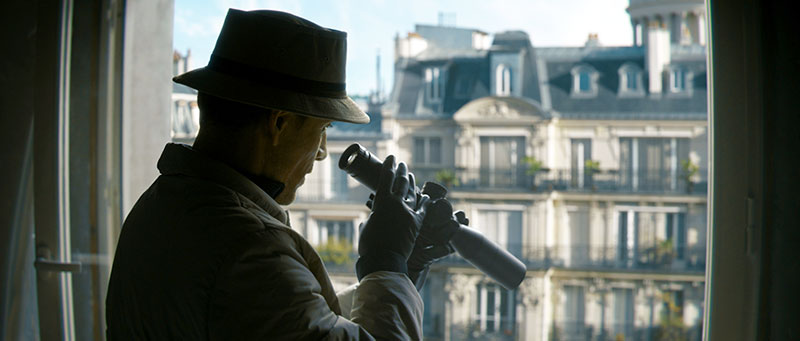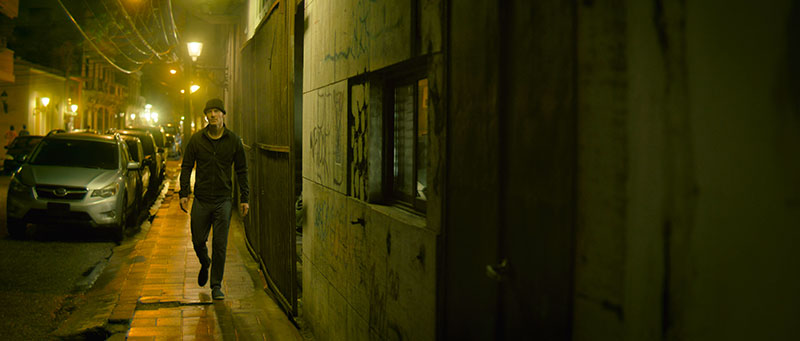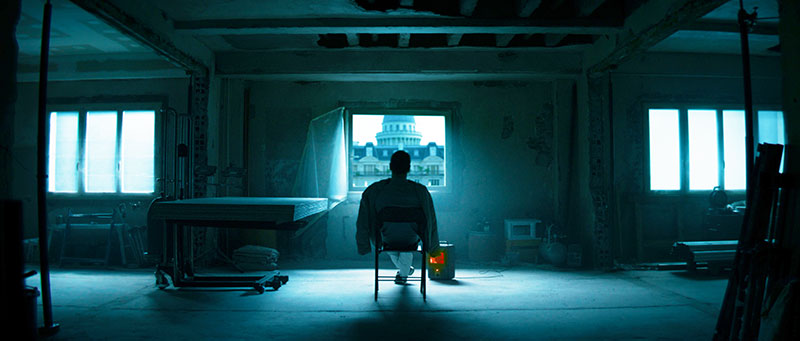Colourist Eric Weidt talks about working with Director David Fincher and DP Erik Messerschmidt to create looks in Baselight for the three locations in a dark story of murder and revenge.

'The Killer' is a thriller directed by David Fincher based on the French graphic novel series of the same name, by Alexis Matz Nolent. The film is about a vengeful assassin who becomes the object of a complex murder plot after a hit goes wrong.
The movie, which made its premiere at the 80th annual Venice Film Festival, was shot by cinematographer Erik Messerschmidt ASC. The colourist was Eric Weidt, who had also worked with the same director and DP on 'Mank' in 2020 and the 'Mindhunter' TV series from 2017 to 2019. A US and French citizen, Eric is a well known freelance colourist who spent 15 years in Paris working with fashion photographers and filmmakers for magazines such as Vogue, Bazaar and Pop, and has been working with David Fincher since 2014.
“I began with Fincher doing beauty work in Nuke in 2014,” said Eric. “I showed him a reel of colour work I’d done working in fashion in Paris, and I think he figured that squared with the kind of precision he wanted to achieve by grading his own projects in-house.”
Locations and Looks
As he is on all of his collaborations with David Fincher, Eric was involved with 'The Killer' project from pre-production, working alongside Erik Messerschmidt on test footage and to create the LUTs.

“We created the show LUTs together for shooting the different locations, which we drove home as looks in the grade,” Eric said. “I started working with test footage early on, especially on stage and to process green/blue screen material where I prepared the LED wall and LED direct projection material that is used simultaneously.”
The movie is set across multiple locations, including Paris, the Dominican Republic and Chicago, all of which required distinct looks.
“There’s Paris at night, with tungsten street lighting, then the Dominican Republic with a misty warm and humid look going on, and then the winter white-point Chicago material,” Eric said. “Our DP Erik wanted to try using a halation filter [for highlight blooming] on a lot of the sub-tropical location material, too. It worked wonderfully, as well as on some snow-mist scenes.”
Comics and Other References

The screenwriter for the movie Se7en, Andrew Kevin Walker, also returned to work with Fincher on The Killer script, which was adapted from the French graphic novel by author Alexis Matz Nolent. “I think Fincher is a big comic book fan, especially in the art of framing the drawn cells to impart the beats of a story,” commented Eric. “Working in film, I think he brings that to movement as well – he’s seeking a kind of effortless visual rhythm that makes you forget that it is highly constructed.”
A cinematic reference inspiring the look of the movie was Jean-Pierre Melville’s Le Samourai (1967), which has a similar subject matter to The Killer. “The Killer is similar to Le Samourai, especially regarding the mood and mathematical ‘grey precision’, which is possibly what Fincher was inspired by.
"But nowadays we have many more tools than in the 1960s, including HDR and cameras that practically have night-vision, and that means we’re able to dynamically work with something that is super-rich, and also subtle. David likes to push and pull colours, but unconsciously always strikes a balance. The audience feels that the story is methodical and deliberate – only going out of control at precise moments.”
Eric also recalled how they started with a “yellow-blue split in Paris, a saturated warm-chocolate shadows look in Dominican Republic, and an ice-cold northern US look”, which evolved according to the needs of each scene.

“In an extended fight scene, black was the modus operandi, defining how we worked,” he said. “We wanted to push for detail, always knowing that more darkness would make it scarier and that we needed to strike a perfect balance.”
Organised Colour
Eric has been grading exclusively on the FilmLight Baselight for seven years. “Honestly, Baselight is so much a part of my process and DNA that it’s hard for me to know how I use it,” he commented. “No feature gets out unscathed.”
“On the grading of The Killer, multi-paste was used a lot because I took whole scenes and ordered them according to camera angle, so that I could balance them with impunity. You can use multi-paste to copy grade data between versions of the same sequence quickly, either in the same timeline or in different timelines. I also used EXR alpha channels a tonne to work with the relative transparency of different layers. I asked for multiple passes of some of the CG work in Paris, too, so that I could make sure every element was consistent.”
Considering his interest in control and consistency, Eric notes that Baselight’s greatest advantage is its ‘organisational prowess’. He is looking forward to utilising the new tools in the forthcoming Baselight 6.0 release. “You can wrangle shots and scenes in no time, group grade, multi-paste and set up 2, 3, 4, 6 or 9-up views,” he commented. “However, although I didn’t use it on The Killer, my very favourite thing about Baselight right now is the new version 6.0. You’ve got Chromogen, X Grade and a myriad of new features – bravo!”

Colour Space
The master grade for The Killer is completed in PQ D3 P65 colour space, and Eric derived both the rec.709 SDR and the DCI-P3 theatrical trim passes using Dolby Vision per-shot analysis.
“This was the first time I’d done a theatrical release with the Dolby Vision 48-nit transform that came out a year or two ago and is now incorporated in Baselight,” said Eric. The Dolby Vision cinema targets and trims give colourists the option to derive a mapped cinema version at 108 nit HDR (Dolby Cinema) or 48 nit SDR (DCI), from their graded ‘home’ HDR master. “It worked really well and got me 90% of the way there. The rest is dosing each scene with the Dolby Trim and then fine-tuning per shot, if and when needed.
“I did almost all of the grade on a QLED wall display that simulated the 1/1000 contrast ratio I’d be getting on a projector. Once projected on a Xenon bulb, as it would be in a cinema, I made a slight contrast increase and we were done.”
Composites
Eric spent a year tied to a Baselight system on the grade for this project and found that one of the most challenging tasks was creating a realistic feel from composited material. “We used defocus a lot to drive home the right amount of depth, which can improve with subtle changes – sometimes using the alpha channels provided by the VFX vendors, sometimes arbitrarily,” he said.

Other than this, he said he is proud and relieved that he managed to move Fincher to sign off on the project at all, commenting, “David had told me post-production is his favorite part of film-making. He may have been joking, but I take it seriously. I think some scenes in The Killer really sing colour-wise, but when you’re working with Fincher and Erik Messerschmidt, I have to say, that’s not hard to achieve.”
‘The Killer’ is in theatres and will be available on Netflix from 10 November 2023. www.filmlight.ltd.uk



